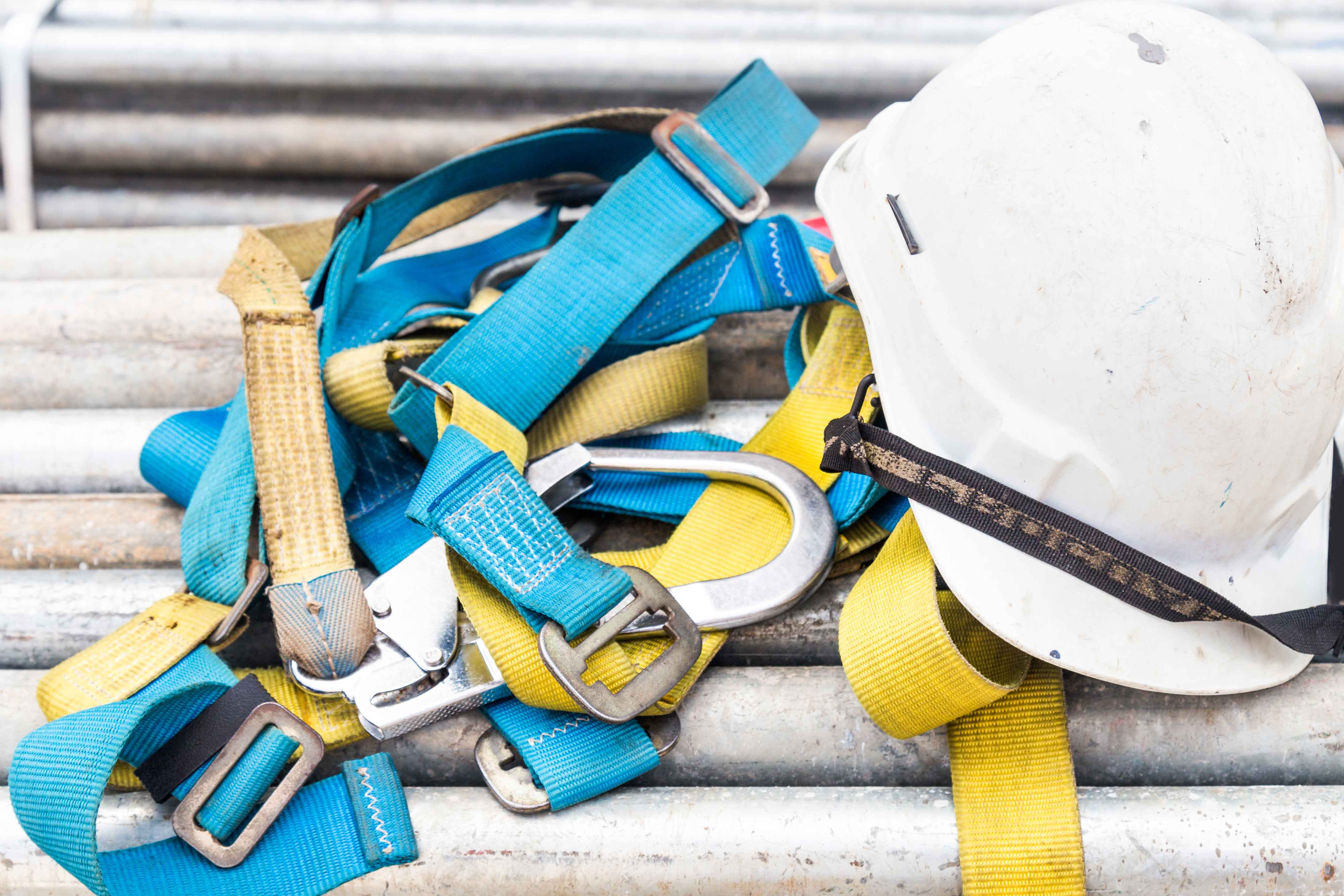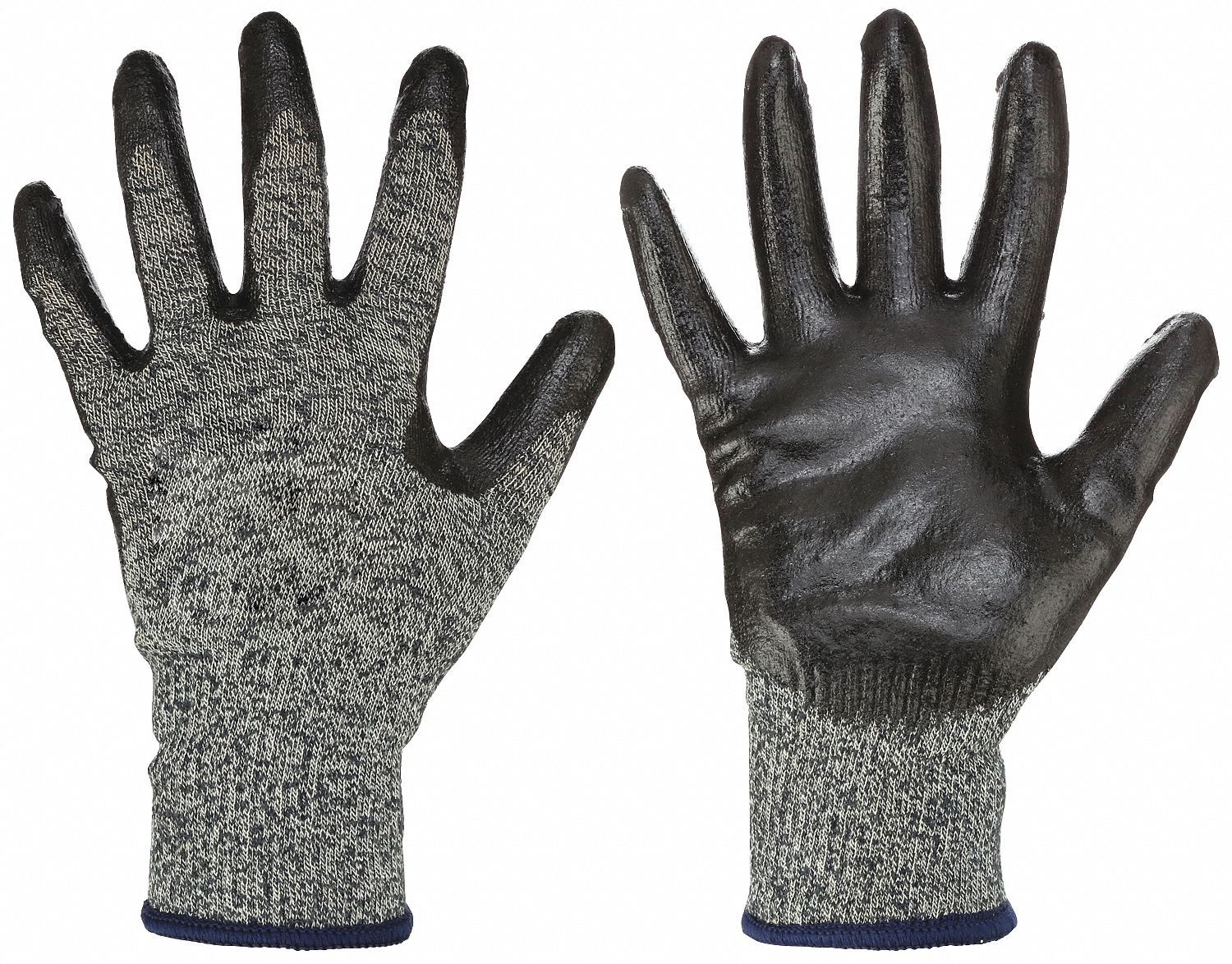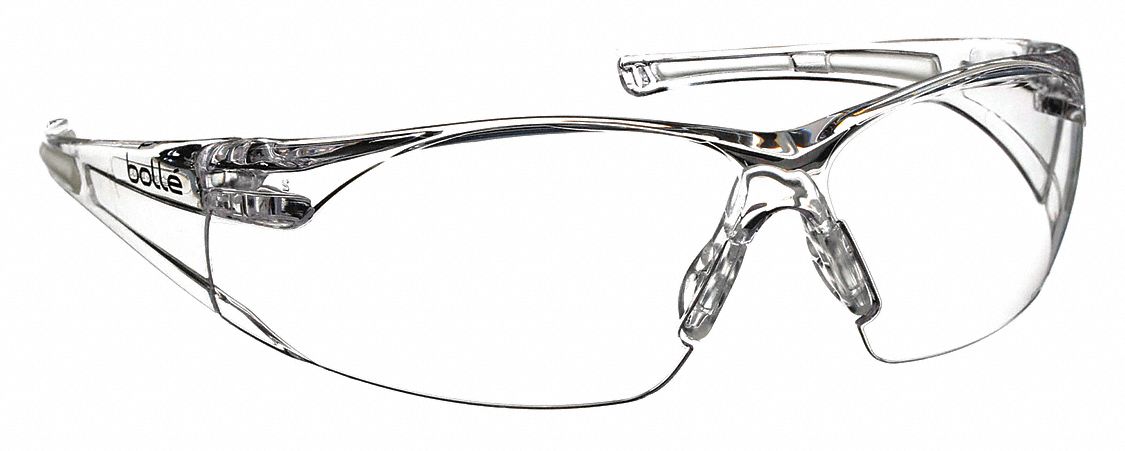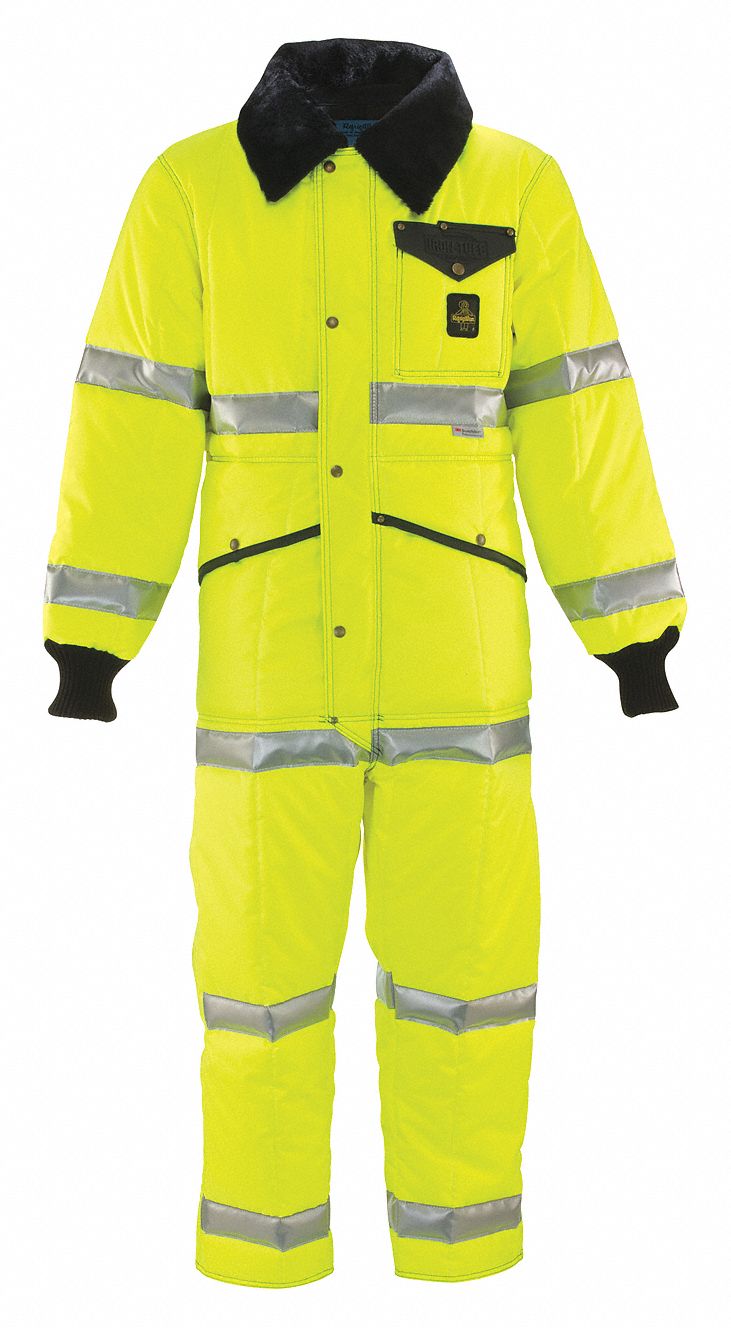

Top 10 OSHA Violations: 2020
By Grainger Editorial Staff 3/10/21


In February 2021, OSHA released preliminary data for the top 10 most-cited violations in fiscal year 2020. The data includes violations cited between Oct. 1, 2019, and Sept. 30, 2020.
The preliminary data was released on a webinar presented by the National Safety Council's Safety + Health magazine. During the webinar, Patrick Kapust, deputy director of the Directorate of Enforcement Programs at OSHA, said that this data can be valuable tool for companies that are developing their safety programs: "Use the top 10 as a guide for your workplace. It's a good place to start if you don't know where to start."
1. Fall Protection – General Requirements (1926.501)
5,424 Violations
| Commonly Cited Industry Sectors | Commonly Cited Substandards | Additional Resources |
|---|---|---|
| Construction: Roofing contractors; framing contractors; masonry contractors; commercial and institutional building construction; new single family housing construction |
||
| 1926.501(b)(13): Fall protection for residential construction | Construction Fall Protection Standards OSHA General Industry vs. Construction Industry Standards |
|
| 1926.501(b)(1): Fall protection at unprotected sides and edges | ||
| 1926.501(b)(10): Fall protection for roofing work on low-slope roofs | ||
| 1926.501(b)(11): Fall protection for steep roofs | ||
| 1926.501(b)(4): Fall protection for holes |
2. Hazard Communication (1910.1200)
3,199 Violations
| Commonly Cited Industry Sectors | Commonly Cited Substandards | Additional Resources |
|---|---|---|
| General industry: Masonry contractors; roofing contractors; automotive body, paint, and interior repair and maintenance shops; general automotive repair; machine shops |
||
| 1910.1200(e)(1): Developing and maintaining written hazard communication program | Hazard Communication Standards Alternative Workplace Labeling Global Harmonized System: A Closer Look |
|
| 1910.1200(h)(1): Provide employees with information and training on hazardous chemicals | ||
| 1910.1200(g)(8): Maintaining and having readily accessible safety data sheets | ||
| 1910.1200(f)(6): Workplace labeling | ||
| 1910.1200(g)(1): Chemical manufacturers and importers to develop safety data sheets |
3. Respiratory Protection (1910.134)
2,649 Violations
| Commonly Cited Industry Sectors | Commonly Cited Substandards | Additional Resources |
|---|---|---|
| General industry: Automotive body, paint, and interior repair and maintenance shops; cut stone and stone product manufacturing; metal coating, engraving and allied services; masonry contractors; nursing care facilities |
||
| 1910.134(e)(1): Medical evaluation: general | Selecting and Using Particulate Respirators Starting a Respiratory Protection Program Qualitative Fit Testing Quantitative Fit Testing |
|
| 1910.134(c)(1): Written respiratory protection program | ||
| 1910.134(f)(2): Fit testing | ||
| 1910.134(c)(2): Respiratory protection programs where respirator use is not required | ||
| 1910.134(d)(1): General requirements for respirator selection |
4. Scaffolding (1926.451)
2,538 Violations
| Commonly Cited Industry Sectors | Commonly Cited Substandards | Additional Resources |
|---|---|---|
| Construction: Roofing contractors; framing contractors; commercial and institutional building construction |
||
| 1926.451(g)(1): Fall protection requirements | OSHA Scaffolding Requirements for Construction and General Industry | |
| 1926.451(e)(1): General access requirements | ||
| 1926.451(b)(1): Scaffolds fully planked and decked | ||
| 1926.451(c)(1): Scaffolds restrained from tipping | ||
| 1926.451(g)(4): Scaffolds installed with guardrails |
5. Ladders (1926.1053)
2,129 Violations
| Commonly Cited Industry Sectors | Commonly Cited Substandards | Additional Resources |
|---|---|---|
| Construction: Roofing contractors; framing contractors; siding contractors; masonry contractors; new single family housing construction |
||
| 1926.1053(b)(1): Use of portable ladders | Are Your Ladders Compliant? OSHA and ANSI Ladder Requirements Ladder Safety Tips and Best Practices |
|
| 1926.1053(b)(4): Use of ladders only for purposes for which they were designed | ||
| 1926.1053(b)(13): Top or top step of stepladder not to be used as a step | ||
| 1926.1053(b)(16): Portable ladders with structural defects withdrawn from service until repaired | ||
| 1926.1053(b)(22): Employees not to carry objects or loads that could cause them to lose balance and fall |
6. Lockout/Tagout (1910.147)
2,065 Violations
| Commonly Cited Industry Sectors | Commonly Cited Substandards | Additional Resources |
|---|---|---|
| General industry: Plastic product manufacturing; sawmills; machine shops; wood container and pallet manufacturing; fabricated metal manufacturing |
||
| 1910.147(c)(4): Energy control procedures | When Does the Lockout/Tagout Standard Apply? Lockout/Tagout Steps for Construction Sites Types of Padlocks |
|
| 1910.147(c)(7): Training and communication | ||
| 1910.147(c)(6): Periodic inspection of LOTO procedures | ||
| 1910.147(c)(1): Energy control program | ||
| 1910.147(d): Application of control |
7. Powered Industrial Trucks (1910.178)
1,932 Violations
| Commonly Cited Industry Sectors | Commonly Cited Substandards | Additional Resources |
|---|---|---|
| General industry: General warehousing and storage; cut stone and stone product manufacturing; recyclable material merchant wholesaling |
||
| 1910.178(l)(1): Operator training in safe operations | Forklift Safety Training Guide Forklift Battery Changing Safety Loading Dock Safety |
|
| 1910.178(l)(4): Refresher training and evaluation | ||
| 1910.178(l)(6): Certification of operator training | ||
| 1910.178(p)(1): Taking PITs in need of repair out of service | ||
| 1910.178(q)(1): Repairs performed by authorized personnel |
8. Fall Protection – Training Requirements (1926.503)
1,621 Violations
| Commonly Cited Industry Sectors | Commonly Cited Substandards | Additional Resources |
|---|---|---|
| Construction | ||
| 1926.503(a)(1): Fall protection training program | Fall Protection Standards | |
| 1926.503(b)(1): Maintaining written certification of training | ||
| 1926.503(a)(2): Training by a competent, qualified person | ||
| 1926.503(c)(3): Retraining after inadequacies are found | ||
| 1926.503(c): Retraining |
9. Personal Protective and Life Saving Equipment – Eye and Face Protection (1926.102)
1,369 Violations
| Commonly Cited Industry Sectors | Commonly Cited Substandards | Additional Resources |
|---|---|---|
| Construction: Roofing contractors; framing contractors; masonry contractors; siding contractors |
||
| 1926.102(a)(1): Use of appropriate eye and face protection | Construction Fall Protection Standards OSHA General Industry vs. Construction Industry Standards |
|
| 1926.102(a)(2): Use of eye protection that provides side protection | ||
| 1926.102(a)(3): Use of eye protection that incorporates or can be worn over prescription lenses | ||
| 1926.102(b)(1): Criteria for protective eye and face protection | ||
10. Machine Guarding (1910.212)
1,313 Violations
| Commonly Cited Industry Sectors | Commonly Cited Substandards | Additional Resources |
|---|---|---|
| General industry: Machine shops; plastic products manufacturing; fabricated structural metal manufacturing; sheet metal manufacturing |
||
| 1910.212(a)(3): Points of operation guarding | OSHA Machine Guarding Requirements | |
| 1910.212(b): Anchoring of fixed machinery | ||
| 1910.212(a)(5): Exposure of bladesThe announcement webinar is available here. |
![]()
The information contained in this article is intended for general information purposes only and is based on information available as of the initial date of publication. No representation is made that the information or references are complete or remain current. This article is not a substitute for review of current applicable government regulations, industry standards, or other standards specific to your business and/or activities and should not be construed as legal advice or opinion. Readers with specific questions should refer to the applicable standards or consult with an attorney.











